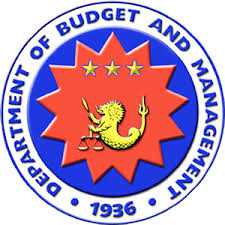Breaking
DBM: 90% of agency budgets released Monday
MANILA – At least 90 percent of the 2016 appropriations of all departments and agencies of the National Government was released today, the first working day of the year, according to the Department of Budget and Management (DBM).
“This huge improvement in the release of allotments is made possible with the new policy of treating the General Appropriations Act (GAA) as the release document. Once approved and in effect, all disaggregated items in the budget of all agencies are deemed effectively released,” said Budget Secretary Florencio B. Abad.
“Together with the earlier policy adopted which authorized departments and agencies to advance pre-procurement activities that enable them to bid projects short-of-award, this policy will further accelerate the already much improved pace of government spending.
It will also ensure that most projects will be implemented before the beginning of the election ban on March 25,” Abad explained.
Abad added that the comprehensive release of the budget under the GAA-as-Release Document (GAARD) regime will not only promote faster implementation of programs and projects, it will also sustain the growth momentum from the fourth quarter of 2015 as procurement of infrastructure projects are fast-tracked.
“While government underspending is a recurrent problem due to institutional weaknesses in agencies for the most part, the GAARD regime gives these agencies a head-start in their procurement activities and gives them much-needed momentum in terms of higher rates of obligation. This results in faster delivery of public goods and services, which will be to the benefit of our people,” Abad said.
The budget chief said that infrastructure projects are expected to be accelerated with the Department of Public Works and Highways (DPWH) targeting an obligation rate of 50 percent within the first quarter of the year.
“We can expect 50 percent of infrastructure projects under the DPWH to be issued notices of award by the first quarter of 2016. This amounts to almost P187.86 billion, and is higher than their actual obligation rate of 39 percent, or P111.14 billion, within the same period last year,” Abad said.
The government is poised to complete key infrastructure projects this year, including 98 percent of 364,693 lineal meters of bridges and 85 percent of 32,526.50 kilometers of roads.
The government has significantly increased total infrastructure spending in the last five years, from P175.4 billion in 2011 (or 1.8 percent of the GDP) to P766.5 billion this year to achieve the international benchmark of 5 percent of the GDP. Abad said this increase in spending is complemented by encouraging public-private partnerships, improving governance to curb corruption, climate-proofing facilities, and improving procurement.
Abad also said he is optimistic that the growth momentum will continue from the fourth quarter of 2015, which he predicts will be a better one than the three previous quarters.
“December 2015 spending will continue the momentum that the previous five months demonstrated. In addition, the spending boost for last-minute Christmas sales will further ramp up growth in the last month of the year,” he said.
Abad noted the drivers in the first semester of 2016 will be the following: issuances of notices of award and notices to proceed for projects that benefited from pre-procurement activities in the second semester of 2015; the great sense of urgency to implement projects before the March 25 election ban; additional consumption push due to the January 1 effectivity of the Salary Standardization Law of 2015; spending in the run up to, during, and after the May local and national elections; and further spending boost from the preparation for the opening of classes in June.
The latter will be highlighted by the first-year implementation of the K-to-12 program (with thousands more teachers and non-teaching personnel being hired), and the educational contracting program Government Assistance to Students and Teachers in Private Education (GASTPE) being expanded to more than a million students.






















